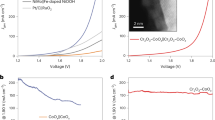Abstract
The discovery of widely distributed populations of chroococcoid marine cyanobacteria (Synechococcus spp.) deep in the water column has focused attention on the autotrophic potential of small (<10 µm) size classes of marine phytoplankton1–5. These organisms contain light-harvesting pigments which specifically absorb in the blue and green regions of the spectrum6–11. Despite the fact that sea water acts as a monochromatic filter, allowing only the blue and blue-green wavelengths to penetrate12, essentially all estimates of the photosynthetic rate of ultraphytoplankton at depth have ignored the changing spectral composition of the natural light field and simulated only the in situ light intensity4,5,13. Here I show that the spectral composition of available light must be considered in estimates of water column productivity and that the depth of the euphotic zone varies between different ultraphytoplankton strains depending on the composition and organization of the photosynthetic apparatus.
This is a preview of subscription content, access via your institution
Access options
Subscribe to this journal
Receive 51 print issues and online access
$199.00 per year
only $3.90 per issue
Buy this article
- Purchase on Springer Link
- Instant access to full article PDF
Prices may be subject to local taxes which are calculated during checkout
Similar content being viewed by others
References
Waterbury, J. B., Watson, S. W., Guillard, R. R. L. & Brand, L. E. Nature 277, 293–294 (1979).
Johnson, P. W. & Sieburth, J. McN, Limnol. Oceanogr. 24, 929–935 (1979).
Krempin, D. W. & Sullivan, C. W. Can. J. Microbiol. 27, 1341–1344 (1981).
Li, W. K. W. et al. Science 219, 292–295 (1983).
Platt, T., Subba Rao, D. V. & Irwin, B. Nature 301, 702–704 (1983).
Wood, A. M. EOS 63, 960 (1982).
Alberte, R. S., Wood, A. M., Kursar, T. A. & Guillard, R. R. L. Pl. Physiol. 75, 732–739 (1984).
Kursar, T. A., Swift, H. & Alberte, R. S. Proc. Natn. Acad. Sci. U.S.A. 78, 6888–6892 (1981).
Ong, L. J., Glazer, A. N. & Waterbury, J. B. Science 244, 80–83 (1984).
Wood, A. M. J. Phycol. 15, 330–332 (1979).
Foss, P., Guillard, R. R. L. & Liaaen-Jensen, S. Phytochemistry 23, 1629–1633 (1984).
Jerlov, N. G. Marine Optics, 231 (Elsevier, Amsterdam, 1976).
Bienfang, P. K. & Takahashi, M. Mar. Biol. 76, 213–218 (1983).
Jenkin, P. M. J. mar. Biol. Ass. U.K. 22, 301–343 (1937).
Gantt, E. A. Rev. Pl. Physiol. 32, 327–347 (1981).
Glazer, A. N. & Hixson, C. S. J. biol. Chem. 252, 32–42 (1977).
Wood, A. M. et al. Limnol. Oceanogr. (in the press).
Chapman, D. J., Cole, W. J. & Siegelman, H. W. Am. J. Bot. 55, 314–316 (1968).
Glazer, A. N. et al. Proc. natn. Acad. Sci. U.S.A. 73, 428–431 (1976).
Glazer, A. N. & Apell, G. S. FEMS Lett. 1, 113–116 (1977).
Zuber, H. Ber. dt. bot. Ges. 91 S, 459–475 (1978).
MacColl, R. & Burns, D. S. Trends biochem. Sci. 4, 44–47 (1979).
Tandeau de Marsac, N. Bull. Inst. Pasteur, Paris 81, 201–254 (1983).
Glazer, A. N. A. Rev. Microbiol. 36, 173–198 (1982).
Engelmann, T. W. Bot. Ztg. 41, 1–29 (1883).
Gaidukov, N. Ber. dt. bot. Ges. 21, 484–493 (1903).
Fogg, G. E., Steward, W. D. P., Fay, P. & Walsby, A. E. The Blue-Green Algae, 459 (Academic, London, 1973).
Ramus, J. J. Phycol. 9, 173–178 (1983).
Fujita, Y. & Shimura, S. Pl. Cell Physiol., Tokyo 15, 939–942 (1974).
Johnson, P. W. & Sieburth, J. McN. J. Phycol. 8, 318–327 (1982).
Faruyo, K. & Marumo, R. J. Plankton Res. 5, 393–406 (1983).
Takahashi, M. & Hori, T. Mar. Biol. 79, 177–186 (1984).
Takahashi, M. & Bienfang, P. K. Mar. Biol. 76, 203–211 (1983).
Murphy, L. S. & Haugen, E. M. Limnol. Oceanogr. 30, 47–58 (1985).
Glover, H. W., Phinney, D. A. & Yentsch, C. S. Biol. Oceanogr. 3, 223–248 (1985).
Guillard, R. R. L. & Ryther, J. H. Can. J. Microbiol. 8, 229–239 (1962)
Author information
Authors and Affiliations
Rights and permissions
About this article
Cite this article
Wood, A. Adaptation of photosynthetic apparatus of marine ultraphytoplankton to natural light fields. Nature 316, 253–255 (1985). https://doi.org/10.1038/316253a0
Received:
Accepted:
Issue Date:
DOI: https://doi.org/10.1038/316253a0
This article is cited by
-
Impact of light quality on freshwater phytoplankton community in outdoor mesocosms
Environmental Science and Pollution Research (2021)
-
Distribution and environmental impact factors of picophytoplankton in the East China Sea during spring
Journal of Oceanology and Limnology (2021)
-
CDOM and the underwater light climate in two shallow North Patagonian lakes: evaluating the effects on nano and microphytoplankton community structure
Aquatic Sciences (2017)
-
Phylogenetic and Gene Expression Analysis of Cyanobacteria and Diatoms in the Twilight Waters of the Temperate Northeast Pacific Ocean
Microbial Ecology (2011)
-
In situ characterization of phytoplankton from vertical profiles of fluorescence emission spectra
Marine Biology (1993)
Comments
By submitting a comment you agree to abide by our Terms and Community Guidelines. If you find something abusive or that does not comply with our terms or guidelines please flag it as inappropriate.



